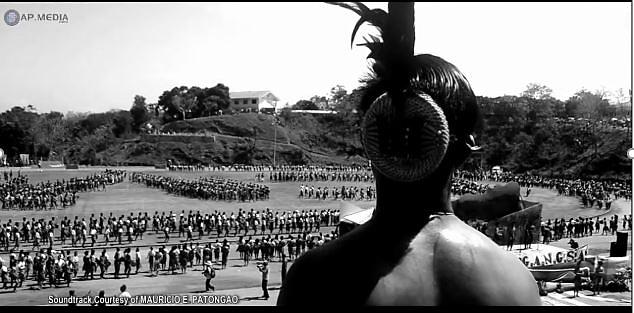By Fr. Samuel Maximo and Genevieve Balance Kupang
AYUWENG emanates from the sacred land, the heartbeats and music of the Cordillera indigenous peoples. The animating sound-beats of the land in harmony with the umili’s (village’s) chants, the sound of the kalaleng or tongali (nose flute), awong (sound) of the gongs, among others are precious gifts from Kabunian (Supreme Being). Ayuweng encompasses the array of natural sounds that abound in the environs— ayuweng di dagem (rustling of the wind), ayuweng di danum (stream bubbles or river flowing babbles), chirping of the birds, choruses of insects, outpouring of rain, spates of thunder and lightning, and swooshing of the trees and grasses – all these give the Montañosa dwellers their intricate and deep connectedness to the land.
Moreover, the Cordillerans who are deeply rooted in their cultural heritage chant, play their gongs and other musical instruments during celebrations and festivities, invocation to the Supreme Being, ngilin (observances) associated with the rice culture, rites of passage and life cycle events such as birth, coming of age, labor, healing rituals, peace pacts, marriage, and death.
This series introduces a collection of audio-visual presentations; a combination of video clips and picture slides integrated with music. In these, you will see the beauty, wonder, and sacredness of our place and culture that people of indigenous descent or non-natives need to respect and preserve.
The audio-visuals being featured in this series is our humble contribution to Pope Francis’ Encyclical Letter “Laudato Si’” (On Care for Our Common Home) calling the Church’s attention to the respect and care of the gift of Creation endowed us by God; our Creator and Source of all life. Note that the indigenous people have long learned to live in harmony with, and in profound respect for nature because it is imprinted in their hearts and consciousness that the land is sacred. And that the land is life.
At the dawn of the 20th century, various American and European Missionaries like the Anglicans, the Catholic Congregation of the Immaculate Heart of Mary (CICMs or “ The Belgian Fathers”) and, later, the ICM Sisters, and other Christian denominations who arrived on our land, came to us with the mindset that they were bringing us the Gospel to evangelize us. However, the truth is that the worship of God and the people’s connectedness with the Divine has long been an integral part and parcel of our culture; lived and experienced in the daily lives of our people long before the missionaries came to us, and they soon learned that they had to “take off their shoes and sandals because they were standing on our holy ground” (Exodus 3: 5, also cf. Joshua 5: 14-15).
This presentation is part of my own research. As such, the images that you will see in the videos are narrative collections of the community life and culture of the Montañosa people taken in various locations since 2009. Although I had been careful in my labeling of the presentations, there might be some misrepresentations of events, people, and dates. No copyright infringements intended. There might be some ‘original’ authors of songs, music, pictures, and videos which might not be properly acknowledged – I render my sincere apology for any such misrepresentation. I am also solely responsible for any and all misspelled or mispronounced words (Maximo, S. 2021).
With respect to environmental, socio-economic development goals and pedagogy, this is a plea to all Cordillerans to respect Creation, uphold our unique and beautiful culture and be proud of our identity. We continue to show to our visitors (local and foreign tourists and companies alike) what we have inherited from our ancestors – our indigenous knowledge, skills, spirituality, and practices (IKSSP), our wisdom in caring for our mother earth, our home.
To our guests from other parts of the world, we appeal to you to respect our place and not utterly disregard our customary practices and traditions. We need to engage in an “ecological conversion” and transformative stewardship of Creation as the encyclical urges us. We owe to the future generations a thriving environment teeming with untampered natural resources. In essence, an intergenerational ecological justice. We learned from our ancestors that our ecosystem is sacred. Creation is an integral part of the web of life that we need to preserve and protect no matter what faith we profess.
This video presentation is likewise dedicated to those who are working hard on the inculturation of our faith and liturgical celebrations. We are grateful to the CICM/Belgian Fathers and the ICM Sisters for the labor of “evangelization” here in the Montañosa (as far as the Catholic Church is concerned). Nonetheless, the faith they professed to us is natively foreign and flavorfully European!
Nowadays, we learn to express our faith in our very own language and culture. We now have the feeling of “Uka tako na!” (this is ours!―our own profession of faith, in the way of our ancestors who knew God long before the European came along).










